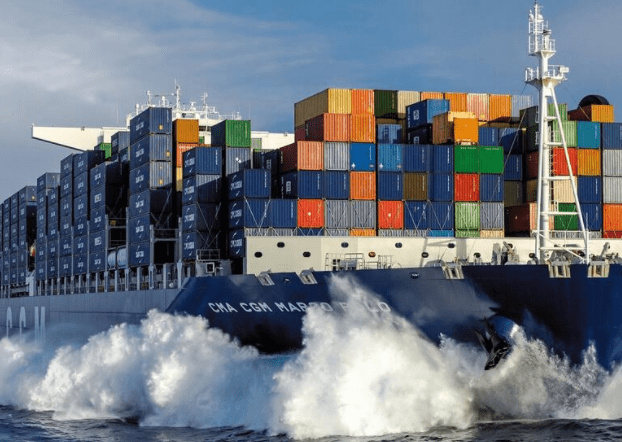Maersk and CMA CGM companies have expanded their logistics services with the aim of recruiting «end-to-end logistics clients», highlighted a UNCTAD report.
To secure space on the vessels, some shippers seek long-term, multi-year, end-to-end contracts with shippers.
For their part, some carriers are looking to convert «ocean customers» into «end-to-end logistics customers» in the long term.
Maersk
Under these agreements, according to UNCTAD, shippers have access to logistics services such as warehousing, customs clearance, visibility, and the ability to speed up or slow down shipments.
Examples include Maersk’s goal to become a full-service end-to-end integrator, and the focus of CMA CGM and its CEVA logistics division on creating integrated services.
In response to increasing congestion and reduced ocean capacity, Maersk has launched the first intermodal block train service between Europe and China.
The Global Shippers Forum argues that the real tipping point for shippers is the slump in service performance and the unpredictability of container delivery, and has renewed its call to remove the block exemption regulation from consortia.
In addition, he points to the increasing number of blank trips (ships skipping a port or ports, or canceling the entire chain) that reduce the number of containers that shippers can export.
This disproportionately affects shippers who pay less, as carriers favor loading from customers who pay more.
In this regard, the United States Congress is drafting legislation to strengthen the Federal Maritime Commission’s oversight of carrier shipping practices.
Rates
Carriers argue that they are deploying all available capacity and that the current stress is being caused by large and rapid changes in demand and surges in trade flows.
According to UNCTAD, this is causing delays in the return of containers and reducing effective capacity, making it difficult to reduce delays and fees, while forcing carriers to adjust their networks and avoid some ports.
They had already been warning customers on the Trans-Pacific route, for example, that schedule disruptions would lead to blank departures.
As for the terminal operators, they blame the carriers for the delays at the ports, and point to increases in double departures: two or more vessels sail within the same week in the same service chain or set of ordered ports.
Large peaks and valleys in volumes leading to operational instability have disrupted operations and increased congestion.
From his perspective, carriers have been looking for alternatives and solutions.
Some have turned to higher-priced air travel, while on the Far East-Europe route they have also been drawn to rail. According to Chinese customs data, rail volumes and capacity remain relatively small, but the two-way commercial value nearly tripled in the first five months of 2021.
Meanwhile, on the trans-Pacific and intra-Asian routes, some commodities, such as cereals and forest products, have experienced temporary decontamination with goods shipped in dry bulk ships, adding to the demand for multi-purpose ships and dry bulk carriers.
![]()

